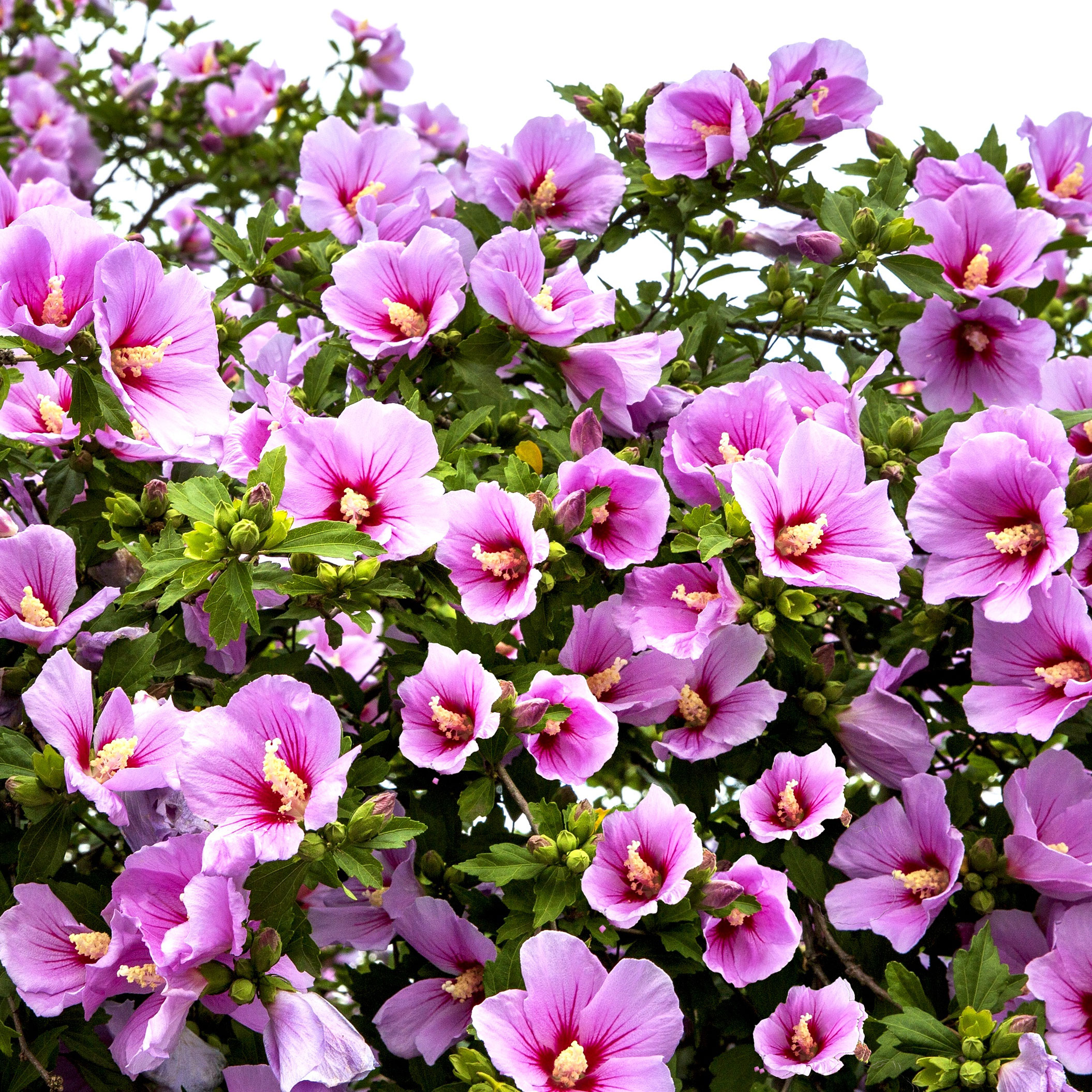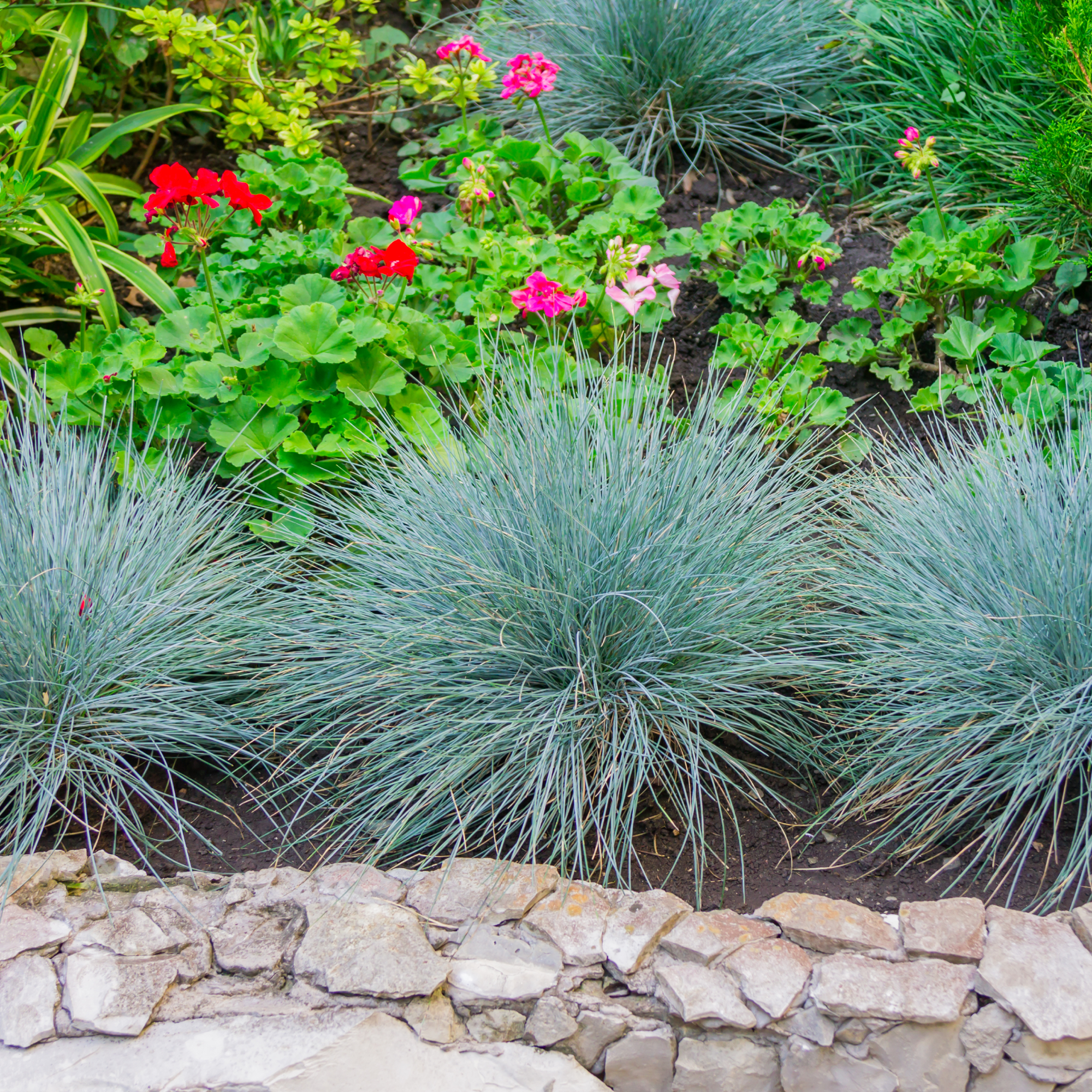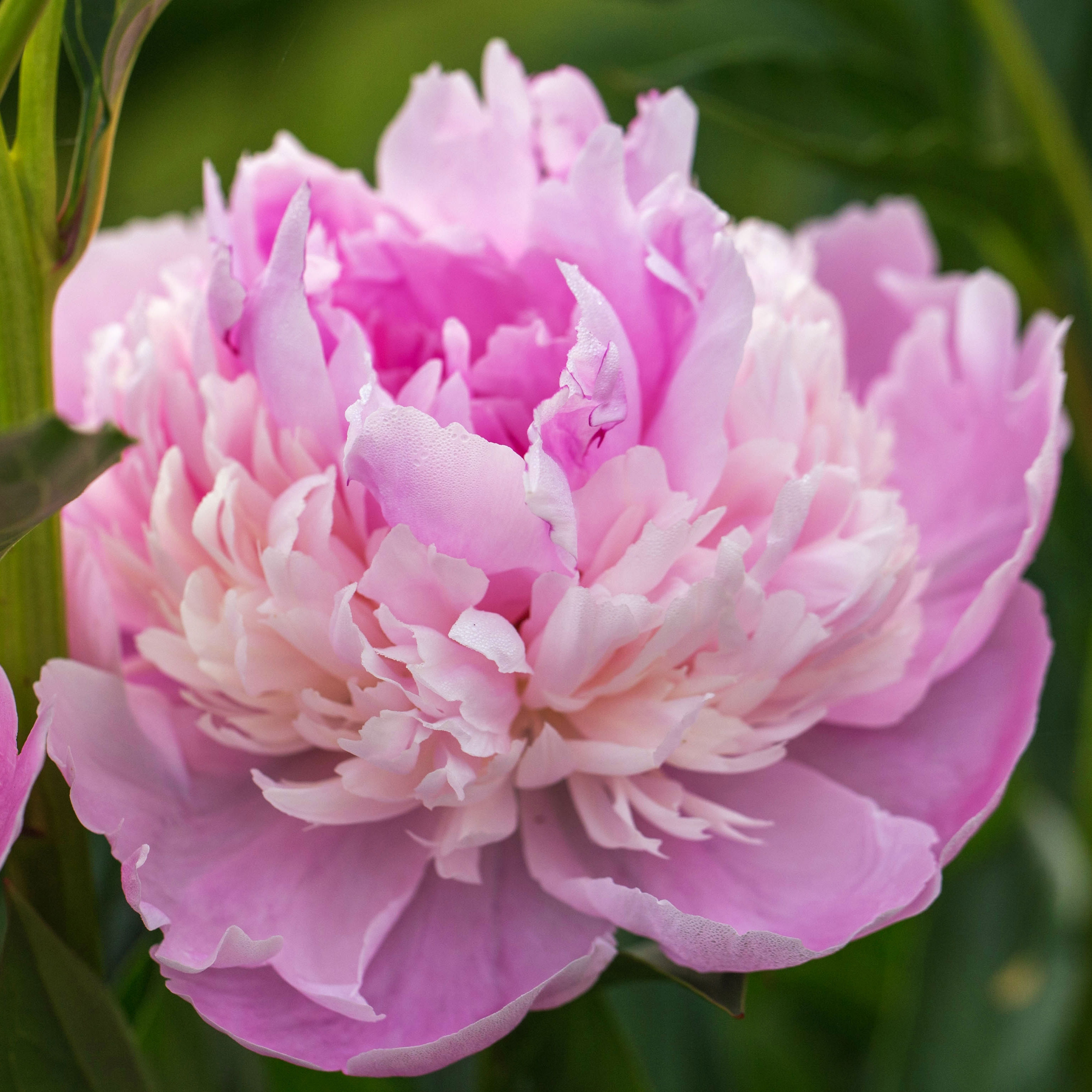Which Invasive Shrubs Should You Avoid Growing? Plus, Best Natives To Plant Instead
Certain plants may look lovely but they can wreak havoc to local areas and native wildlife. Here are the key invasive shrubs to avoid – with recommendations on gorgeous native alternatives to try


Amy Draiss
It’s important to think carefully about every plant and shrub you bring into your garden, particularly if you care about local wildlife and regional ecosystems. Many people plant invasive shrubs because they look nice or require little maintenance. The problem is that invasive shrubs can spread outside of your yard and cause harm to your local ecosystem and to native wildlife like butterflies and bees.
Here, we take a closer look at some of the most common invasive bushes that find their way into gardens – and introduce you to unique native shrubs that are non-invasive, equally lovely, and reliable as planting alternatives.
When is a Shrub Invasive?
Before we identify invasive plants you need to think twice about, it helps to understand what we mean when we talk about these types of shrubs. A plant species is considered invasive if it is both non-native to an area and causes harm to that area. Often the harm is related to the native ecosystem – for instance, an invasive species may crowd out native species or make it harder for that native species to sustain or survive. The harm can also be economical or to human health.
One of the major ways that invasive species cause harm is by spreading aggressively. Non-native plants that don’t spread readily and don’t cause harm usually are not listed as invasive to native plant environments.
Why It Is Important To Find Native Alternatives
It’s always best for the environment and your local ecosystem to plant native species. Even if you are after the finest flowering bushes, it’s important to avoid using non-native plants that are listed as invasive. Alternative native species are much better and prevent much of the harm caused by invasives, which:
- Outcompete native plants
- Create monocultures instead of diverse habitats
- Reduce appropriate habitat and resources for wildlife
- Spread outside of yards and harm other areas
- Are difficult to remove and control
Awareness is essential when avoiding invasives, especially if you are keen on gardening with native plant alternatives. There are plenty of knockout native flowers you can grow in your backyards, and the same as true of shrubs and bushes. Check with your local extension office or your state’s government agency that oversees decisions about invasive plants to find out what plants are invasive in your area.

The popularity of several invasive shrubs can make it more difficult to landscape responsibly. These are some examples of bushes you might be tempted to use but should avoid – along with excellent non-invasive bushes that make good native alternatives for your gardens.
Gardening tips, videos, info and more delivered right to your inbox!
Sign up for the Gardening Know How newsletter today and receive a free copy of our e-book "How to Grow Delicious Tomatoes".
1. Burning Bush

Burning bush (Euonymus alatus) has a distinctive bright red fall foliage that makes it popular in gardens. Unfortunately, burning bush is non-native and invasive. It grows readily and aggressively in a variety of conditions, outcompeting many native shrubs. Birds eat the berries and spread burning bush to other areas.
Try this instead: Instead of burning bush, try Fothergilla major or F. gardenia. These two southeast native species of fothergilla have excellent fall color and fragrant spring flowers. They are hardy as far north as zone 5.
You could also try black chokecherry (Aronia melanocarpa), native to most of the eastern US. This has good fall color and hardness up to zone 4. You can buy Fothergilla Major ‘Mt Airy’ and Chokeberry ‘Iroquois Beauty’ in the Gardening Know How Shop.
2. Japanese Barberry

Japanese barberry (Berberis thunbergii) is popular for its low-maintenance needs, compact form and pretty purplish foliage. However, it spreads very aggressively and is now found in many natural areas, crowding out several native species.
Try this instead: Common ninebark (Physocarpus opulifolius) is a good alternative with a similar compact size. Look for cultivars with purple foliage. It is native to most of the central and eastern US and is hardy to zone 3.
3. Autumn Olive

The autumn olive or Elaeagnus umbellata (aka cherry silverberry) is a large shrub that can also be grown as a small tree. It spreads readily when wildlife eat the berries and disperse the seeds. Autumn olive was originally used in landscaping for its ability to thrive in tough conditions and its rapid growth.
Try this instead: One of the best non-invasive shrubs you can try is the highbush cranberry (Viburnum trilobum). This is a good alternative as it grows to a similar size as autumn olive and also has attractive berries. As a bonus, you can use the berries in jams or sauces. It is native across most northern states and is hardy to zone 2.
4. Bush Honeysuckles

Honeysuckles that take a shrub form are invasive. These include Amur honeysuckle (Lonicera maackii), Morrow’s honeysuckle (L. morrowii), Japanese honeysuckle (L. japonica) and Tatarian honeysuckle (L. tatarica). They spread rapidly, form dense thickets, crowd out native plants, and provide birds and other wildlife with fruits that may be edible but which are not very nutritious.
Try this instead: Summersweet clethra (Clethra alnifolia) is a native alternative with similarly fragrant summer flowers that attract pollinators. It is hardy to zone 4 and is native in most of the eastern states. If you’re willing to try a vine in place of a shrub, native vining honeysuckles have similar fragrant flowers. You can buy Clethra ‘Hummingbird’ and ‘Ruby Spice’ from the Gardening Know How Shop.
5. Privet

Several species of privet (Ligustrum amurense, L. obtusifolium, L. vulgare) are invasive but they are prized for their dense growth, especially in hedge planting. Invasive ligustrums are also very easy to grow and tolerate tough conditions, which means they outcompete natives.
Try this instead: For a pretty and practical native hedge shrub, try one of several viburnum varieties. Arrowood (V. dentatum) and maple-leaved viburnum (V. acerfolium) are two examples of native viburnum species that can be pruned into an attractive dense hedge with the right spacing and growing conditions.
Frequently Asked Questions
How Do You Get Rid of Invasive Shrubs?
The most effective way to eliminate an invasive shrub will depend on type. Check with your local extension office for advice on particular species. In general, the most comprehensive way to remove an invasive shrub entirely is to manually remove it and pull out and dispose of all the roots.
How to Tell if a Plant is Invasive?
Several resources can help you determine if a plant is invasive. Your county’s extension office is one good resource. Your state will also have an agency with information about invasive species, often the natural resources department. Check with your county extension office for information about invasive shrubs in your area. The office can also provide you with resources for non-invasive options and alternatives to use in your yard.
This article features products available from third party vendors on the Gardening Know How Shop. Keep in mind that our plant inventory is limited - so if you’re thinking of purchasing, don’t wait!

Mary Ellen Ellis has been gardening for over 20 years. With degrees in Chemistry and Biology, Mary Ellen's specialties are flowers, native plants, and herbs.
- Amy DraissDigital Community Manager
-
 How To Keep Dahlias Flowering For Longer – Start Now With These Pro Tips For A Bloom-Filled Summer & Fall
How To Keep Dahlias Flowering For Longer – Start Now With These Pro Tips For A Bloom-Filled Summer & FallThey are some of the most popular, diverse and dynamic summer flowers you can grow – so here’s how to keep dahlias flowering for as long as you possibly can for a joyful extended season of blooms
-
 12 Best Shrub Roses For Every Garden – Enjoy Abundant Romantic Blooms All Summer Long
12 Best Shrub Roses For Every Garden – Enjoy Abundant Romantic Blooms All Summer LongFill garden beds, borders, and pots with these top-performing shrub roses and enjoy many years of color, beauty, and fragrance that spans three seasons.
-
 How To Keep Dahlias Flowering For Longer – Start Now With These Pro Tips For A Bloom-Filled Summer & Fall
How To Keep Dahlias Flowering For Longer – Start Now With These Pro Tips For A Bloom-Filled Summer & FallThey are some of the most popular, diverse and dynamic summer flowers you can grow – so here’s how to keep dahlias flowering for as long as you possibly can for a joyful extended season of blooms
-
 Do Deer Eat Hydrangeas? How To Keep Beloved Shrubs Safe From Greedy Grazers
Do Deer Eat Hydrangeas? How To Keep Beloved Shrubs Safe From Greedy GrazersDo deer like hydrangeas? Everything you need to now about deer and hydrangeas, including the best types to plant if you have deer in your area.
-
 8 Flowering Shrubs That Bloom All Summer – To Vamp Up Borders & Sweeten Your Curb Appeal
8 Flowering Shrubs That Bloom All Summer – To Vamp Up Borders & Sweeten Your Curb AppealLooking for the longest blooming bushes for your borders, pathways and lawn edgings? You'll love these 8 flowering shrubs that bloom all summer long
-
 6 Blue Ornamental Grasses That Will Wow Your Neighbors And Add A Unique Touch To Your Landscape
6 Blue Ornamental Grasses That Will Wow Your Neighbors And Add A Unique Touch To Your LandscapeChoosing a blue ornamental grass can dress up borders and yards with striking color that changes with the seasons.
-
 How To Grow A Sorbet Peony For Fluffy Pink Double Blooms With Unique Frills
How To Grow A Sorbet Peony For Fluffy Pink Double Blooms With Unique FrillsFor pink peonies with a unique edge, the Sorbet peony is a super-frilly bloomer with marshmallow and cream colored petals. Here’s how to grow this dynamic cultivar
-
 Grow Vanilla Strawberry Hydrangea Shrubs: Try Vanille Fraise Hydrangeas For Sweet Blooms Every Summer
Grow Vanilla Strawberry Hydrangea Shrubs: Try Vanille Fraise Hydrangeas For Sweet Blooms Every SummerFor a dreamy shrub that brings soft color variations and long lasting visual interest, grow a Vanilla Strawberry hydrangea. Here’s how to care for Vanille Fraise shrubs
-
 Coral Sunset Peony: Your Complete Guide To This Beautiful Color-Changing Hybrid
Coral Sunset Peony: Your Complete Guide To This Beautiful Color-Changing HybridThe coral sunset peony is a gorgeous addition to any garden. This beauty has double blooms that undergo an amazing color change as they age.
-
 How To Grow Panicle Hydrangeas For Gorgeous, Low-Maintenance Blooms All Summer Long – Plus, Top Cultivars To Try
How To Grow Panicle Hydrangeas For Gorgeous, Low-Maintenance Blooms All Summer Long – Plus, Top Cultivars To TryPanicle hydrangeas are the ultimate low-maintenance shrubs! These beauties bloom all summer and all it takes is a little care. Here's how to help them thrive.
